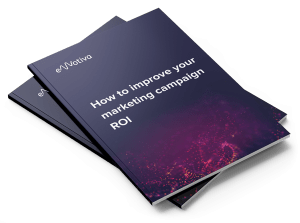Boost the ROI of your advertising campaigns using EmPower.
Summary
To date, the marketing world is awash with multiple metrics used to evaluate advertising campaigns’ performance. However, not all of these data have the same utility, and only some are truly functional.
However, today, thanks to Artificial Intelligence tools, it is possible to capture genuinely relevant data. That will allow you to make more accurate decisions about which marketing campaigns to use for your business.
In this article, we look at one of the artificial intelligence platforms you can use to get quality metrics, and it is called EmPower.
Key Points
- Only 3% of the world’s collected data is quality data
- EmPower helps your company achieve a better ROI
- The subconscious mind makes 90% of our decisions
AI is supporting companies in collecting better data
All companies have started collecting every type of data available in the digital world. Unfortunately, however, having more data does not necessarily mean better results. Data must be structured and interpreted in the right way.
In fact, according to research done by Harvard Business Review, 97% of existing data are not quality data. That means that you cannot use it to improve your marketing campaigns or brand positioning in most cases.
New Artificial Intelligence tools have emerged that enable reliable data through predictive analytics to solve this critical issue and save companies time and budget.
One of these is EmPower, i.e., a SaaS platform for measuring audiences’ attentional levels and emotional responses to a piece of content.
What does EmPower do?
Getting data that companies can use to improve ROI is one of the main goals of every brand, especially when we talk about marketing campaigns.
To avoid wasting time and budget by immediately driving advertising campaigns to better results, EmPower allows companies to gather deep insights about consumers to build a solid emotional bond with the brand.
For each piece of content analyzed, the software returns metrics that companies cannot find through standard analytics tools. That is because the algorithm used collects data by reading facial muscle activations helpful in coding both the attentional and emotional levels of the audience.
What data can companies obtain?
Attention and emotions are two metrics that companies can obtain from ‘content analysis. Computer Vision algorithms not only calculate people’s attentional and emotional levels but also use this data to come up with metrics such as:
- Attention Threshold: The attention threshold measures how many seconds the audience remained attentive until the first distraction. Attention thresholds can vary depending on the person and the content.
- Global Index: this is a summary of data that indicates from the outset whether the content analyzed had good results and is in line with the marketing campaign’s objective.
- Target optimization: this data allows the company to save budget in media planning by indicating at a glance which target segment is most attentive and emotionally involved, thus avoiding wasting money on poorly connected targets.
- Predictive click: unlike click-through rate, predictively determines whether the user will interact with the content by analyzing the emotional response of the first 5 seconds.
Companies can improve the ROI of their advertising campaigns by relying on these metrics and other data obtainable from predictive content analysis on attention and emotion.
Why rely on attention and emotions?
Emotions have always guided human beings in everyday choices. In fact, according to one study, more than 90% of human decisions occur through the subconscious mind.
Moreover, Nielsen has shown how content with an emotional impact generates 23% more sales volumes.
That is why relying on this new type of data is much more reliable than observing data from past marketing campaigns.
Measuring expressions of emotions is possible because of the insight of psychologist Paul Ekman. Over the years, he refined his model by coding the F.A.C.S. (Facial Action Coding System), which helps classify action units (Action Units) to define the expression of the seven primary emotions; joy, surprise, fear, anger, disgust, contempt, and sadness.
Thanks to this technology, it is finally easier to understand the motivations behind consumer behavior. But to know how and why content that attracts attention and gets audiences excited can improve the R.O.I. of one’s marketing campaign, we need to detail.
DOWNLOAD YOUR WHITE PAPER FOR FREE
















